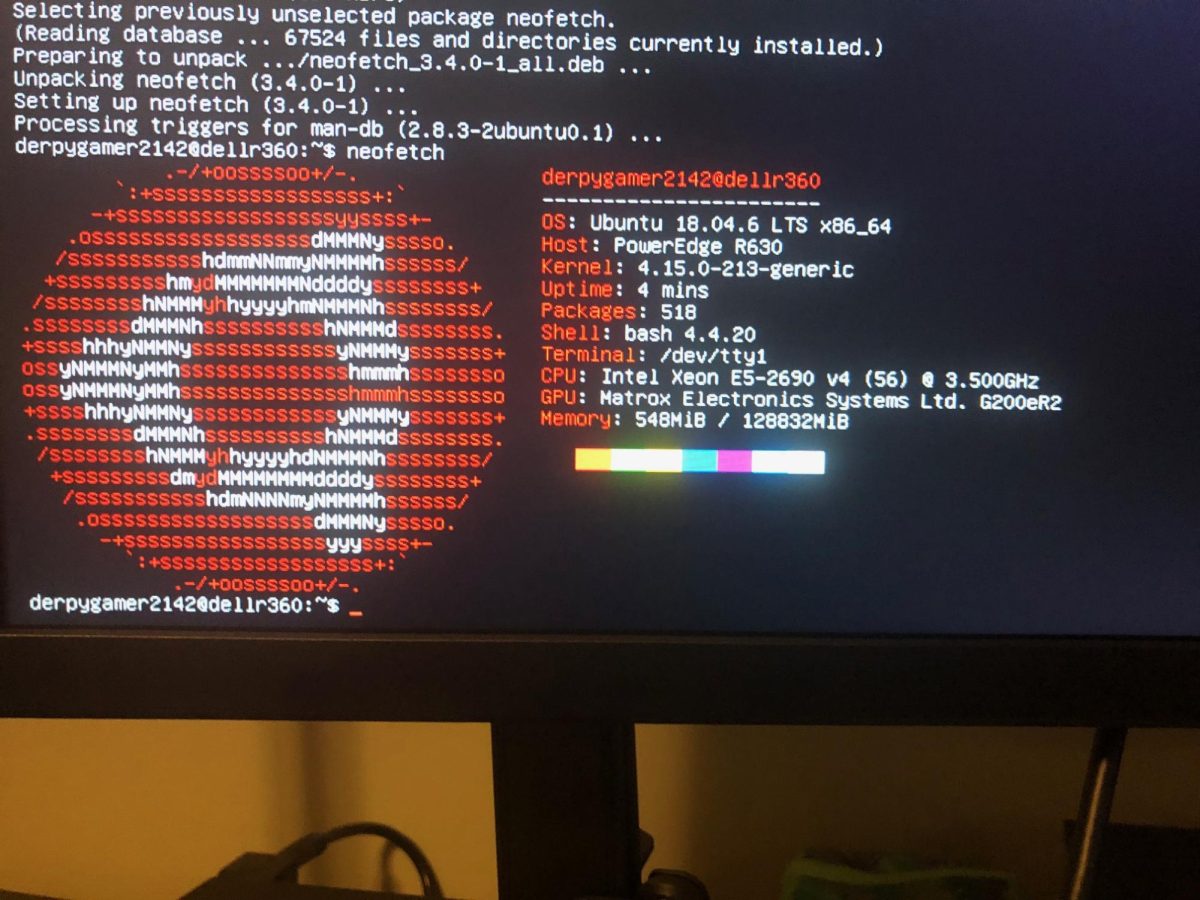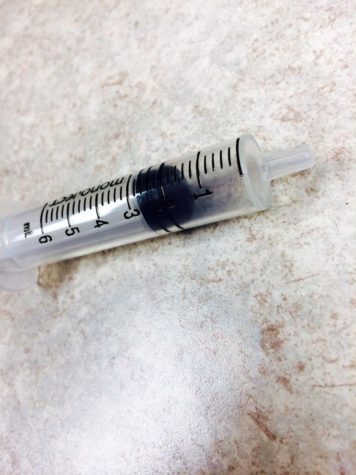Chasing the dragon
December 16, 2014
Heroin is overdosing its way into the lives of everyday people. People are being needled into the veins of drug addictions.
Heroin is a serious drug that is highly addictive. People prefer to inject heroin to snorting or smoking it because of the misconception that the liquid form will not lead to an addiction.
When speaking of heroin, exuberance is an understatement for the growing population of users.
With regular heroin use, tolerance is developed. This means that a heroin user will need to use more heroin in order to achieve a high at the same intensity.
When higher doses are used over time, the body will develop a physical dependence on the drug, and the addiction will develop. Abusers will go through a withdrawal period if they do not use the drug regularly.
Withdrawal appears within a few hours only for regular abusers, produces cravings for the drug, muscle and bone pains, insomnia, cold flashes, goose bumps, and many more effects.
“[People are in a] stupor. [They] can’t really do anything. [They just become] kind of catatonic paralyzed.” Tim Haislet, Orono High school biology teacher said.
Being processed from morphine, a natural substance extracted from the pods of the Asian poppy seed plant, heroin is thought of being a “natural” drug.
Haislet said that people have a euphoric experience when they are high with heroin, though they are wiped out. People become vulnerable.
Heroin is a narcotic. It stems from opium. Usage of opium can be traced to around 3400 B.C. It was first cultivated in lower Mesopotamia. Sumerians called the poppy plant Hul Gil or the joy plant. The cultivation of the poppy seed spread from the Sumerians to the Assyrians, and from the Assyrians to the Babylonians and Egyptians.
Drugs made from opium are called opiates. Heroin is the most powerful of the opiates. It is the fastest acting of all the drugs. Use of heroin can give people feelings of happiness and fearlessness.
Synthetic drugs, drugs that are man made, and now being produced to mimic the effects that heroin have on people.
People are taken to the mountains to help break people from their addictions Haislet said.
Billy Idol, singer of 1980s hit “White Wedding” used to be an heroin user. Idol said that he has not used any hard drugs since 2003, though he will still smoke marijuana.
Haislet said that the reason the use of heroin has grown within the metro area is due to money.
Heroin has a series of names including, “skag”, “junk”, “Mexican black tar”, “smack”, and many more.
“With [heroin], it is more dangerous because it is injected. With that being said, it is more likely that people will share needles,” Ann Peiler, Orono High school health teacher said. “The withdrawal from heroin is supposed to be pretty strong. In a “Teen Files” video I show in my health classes, this guy was arrested. His addiction was so strong that in the cell he became so sick that he would just lay there in his own vomit.”
The effects of heroin abuse appear quickly after a single dose. Those effects disappear initially after a couple hours.
The health conditions that are associated with the use of heroin include collapsed veins, infectious disease, and weakened immune system. Diseases that are spread through sharing needles include human immunodeficiency virus (HIV), acquired immune deficiency syndrome (AIDS, the final stage of HIV), and hepatitis.
Drug trends tend to stay the same when people use harder drugs. Certain drugs that are used shift over time Peiler said.
“[Many dealers] become aggressive because they don’t eat, or sleep when [they are] high, which makes them have aggressive behaviors,” Ann Turner Orono High School health cleark said.
Long-term heroin effects appear a while after the first use. Chronic users may develop a number of types of pneumonia, which is result of the poor health of the abuser. The effects also become more serious due to heroin’s effects on the respiratory system.
Continued use of heroin may result in clogging blood vessels in the lungs, liver, kidneys, or brain. Monthly use of the drug can soon turn into a weekly using for abusers. Not before long, people begin using the drug everyday.
Until the 1990s, the most common way that people would use heroin was through the administration of the drug though injections. Most users experience a negative first reaction to the drugs.
“When I worked in the ER, there would be people that were on drugs and they were completely different people when they were high. We would put them in a completely different room, restraining them with leather straps, because they were ferociously strong and out of control. When they came out of that high, they were completely different people.” Turner said.
Smoking heroin gives users more control of their initial intake of the drug. Injection administrates a larger amount of the substance into the body. The injection turns into a high more quickly due to it being injected right into the bloodstream
Turner said that she witnessed a user through stages. He began with smoking pot. Once that stopped giving him a buzz, he graduated to crack cocaine. He then graduated to heroin. Turner said that people turn to more intense drugs to get as high.
Smoking heroin will lead to less of an initial rush versus injecting the drug.
“When people have addictions to narcotics, if they had a back surgery or some other surgery, that addiction can happen fast. It is not easy for people to get a prescription narcotic for their addiction. They have no choice so they turn to heroin. With heroin [people] are worried about overdoses,” Peiler said.
Most heroin treatment programs have a failure rate of nearly 80 percent. A common first step of a treatment program is a detoxification process.
Many people suffer extreme withdrawal through the periods, causing them to break.
The addiction is not easy for people to overcome. It is also not a cheap process. Many of the heroin addicts will face a life of continuous relapse, which in the end breaks up families followed by declining health.
Legal consequences include mandatory prison time. Federal law states that convicts can have loss in federal benefits, confiscation of their properties, and they are also faced with a number of fines and jail time.
Photo/ Char Naegele


























































